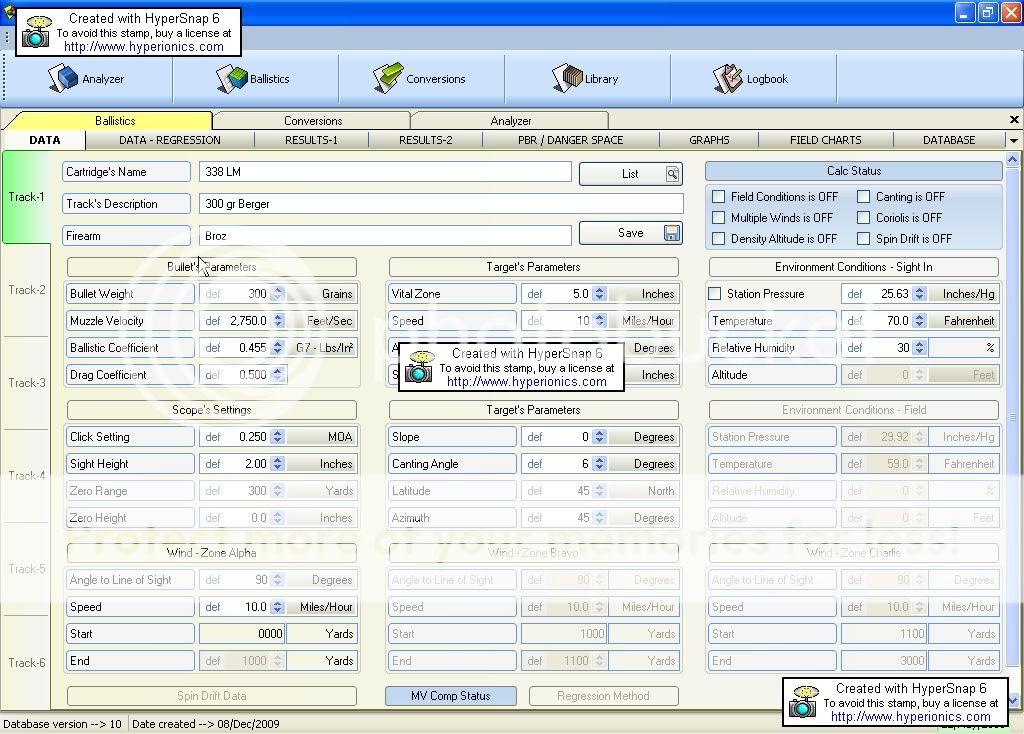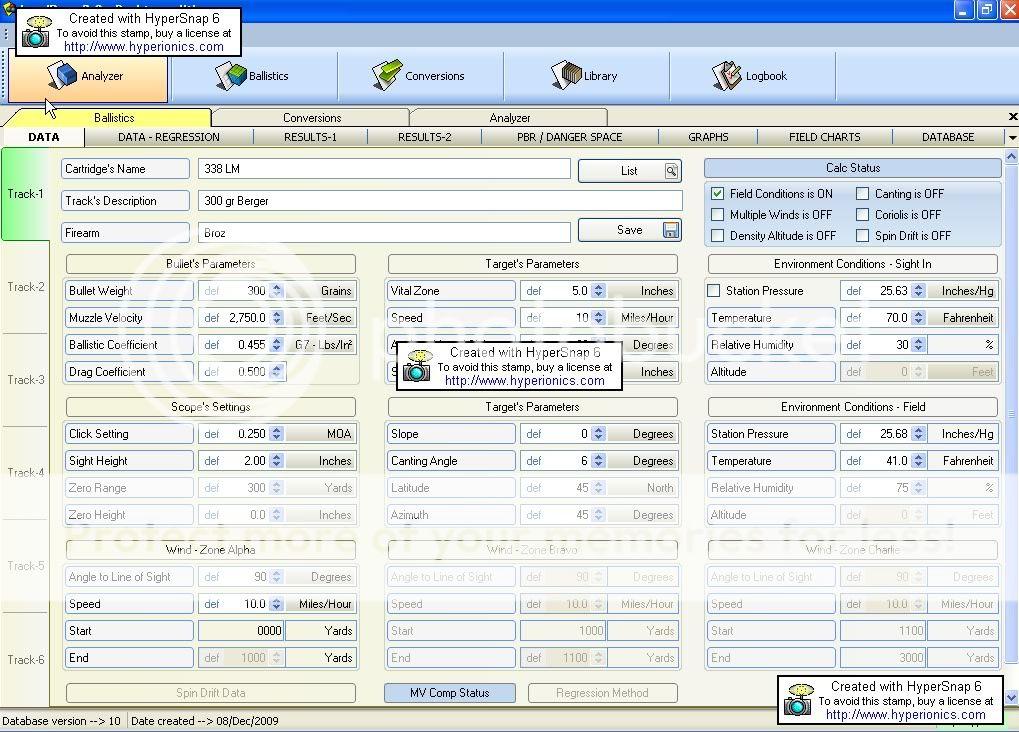Question , I am playing here trying to learn. on the Data, Env, page. On top the sightin data. If I check baro box and then place a 0 in the alttitude box and also place a 0 in the Altitude box with "field cond" checked it gives me 20.1 moa and that is very close.
Is this the proper method using the Baro instaed of using Altitude? I had both in there and that is where it gives me the incorrect 19.1 moa.
Jeff
Broz,
The upper "sight in" conditions must always be ICAO Standard Conditions for Berger bullets, because their BCs are referenced to ICAO conditions, which are:
29.92 in/Hg
59F
0% RH
A bullet's BC rating only has any meaning to us if we know the associated atmosphere density (environmental conditions) that the bullet's BC is referenced to. Look in the
LoadBase 3.0 Desktop edition User's Manual. Mine is Code version 3.0.0.3, on page 41. There is a section titled
Ballistic Coefficient reference. It is in the portion of the User's Manual titled
7 - Modules -> Ballistics; the third page in under
Ballistic Coefficient reference. There will be found a table identifying the various bullet manufacturer's BC reference for their published BCs. Berger, Nosler, Lapua, and GI APG use ICAO Standard Conditions as their reference environmental conditions. On the other hand Barnes, Hornady, and Sierra use "Standard Metro" environmental conditions as the reference for their advertised BCs.
So your
Environment Conditions - Sight In values need to be changed to ICAO Standard Conditions for the Berger 300 grain Hybrid G7 BC. If you enter any other Environment Sight In conditions other than ICAO Standard Conditions for the Berger B7 BC, then you will have entered error into the LoadBase 'engine', because the BC you entered will have been incorrect - to the extent that the values entered for environmental conditions is different from ICAO standard 92.92 in/Hg, 59F, and 0%RH. LoadBase software assumes that the BC value is referenced to the ICAO Standard Atmosphere, so ICAO Standard Atmosphere environmental conditions should automatically appear as the default in the first Environment Conditions Sight In box for environmental conditions.
If you're using a Kestrel to obtain atmospheric conditions and you're obtaining Station Pressure, then do not click Barometric Pressure on. Just run with Station Pressure.
Another reason it's important to enter ICAO Standard Conditions reference Environmental Sight In conditions properly is if you use the Spin Drift feature in LoadBase; the Stability Factor (SG) calculated within the Analyzer Module is also referenced to ICAO standard conditions, when the 'Standard Conditions is On' box is checked in the Analyzer Module.
So what to do if your actual environmental conditions are not ICAO Standard Conditions at the time you zero (sight in) your rifle? Enter your actual field environmental conditions at the time you zero in your rifle in the
Environment Conditions - Field window. After doing so -
and this can be confusing for the uninitiated - the Ballistics Module Data Tab value entered under Scope's Setting (Desktop LB3) for Zero Height will be representing the Zero Height at your Zero Range for ICAO Standard Atmosphere (Environment Conditions Sight In) conditions - not the Zero Height for your actual environmental conditions at the time and location you zero your rifle. The Zero Height value calculated by LB3 for your actual field environmental conditions (Environment Conditions Field) will be the value reported under the Results tab, provided the Field Conditions is ON box is checked. So if your zero range is 300 yds and your bullets are dead on at 300 yds, then the
Path value under the
Results tab at 300 yds should be 000.0" In order to obtain the 000.0" value under the Results tab, you will need to enter a different value under Scope's Setting (Desktop LB3) for
Zero Height at your Zero Range if the field environment conditions during sight in are substantially different than ICAO Standard Conditions. In an atmosphere less dense than an ICAO atmosphere the Zero Range value entered under Scope's Setting will lower (lesser value) than the Path value calculated by LB3, because the values are for different environmental conditions. Play with these features and you will observe what I am trying to explain. Enter environmental conditions of 25.92 in/Hg for an Environment Conditions - Field value and turn on the Field Condition is ON box; and then observe how the Zero Range value under Scope's Setting varies from the calculated Path at your Zero Range. The difference in values is due to the difference in Environmental Conditions values between ICAO values and your actual field environmental values.
LoadBase 3.0 will be dead nutz on if you enter proper values. The Coriolis affect at my Alaska Latitude of 60-61 degrees is substantial at 1000 yds. Especially when added on top of the required Spin Drift dope.
Hope this helped. Perhaps I can clarify by answering a few specific questions. I began using LB improperly by mis-matching BC input values with incorrect Environment Conditions - Sight In input values. I am now confident I am using LB3 properly.



